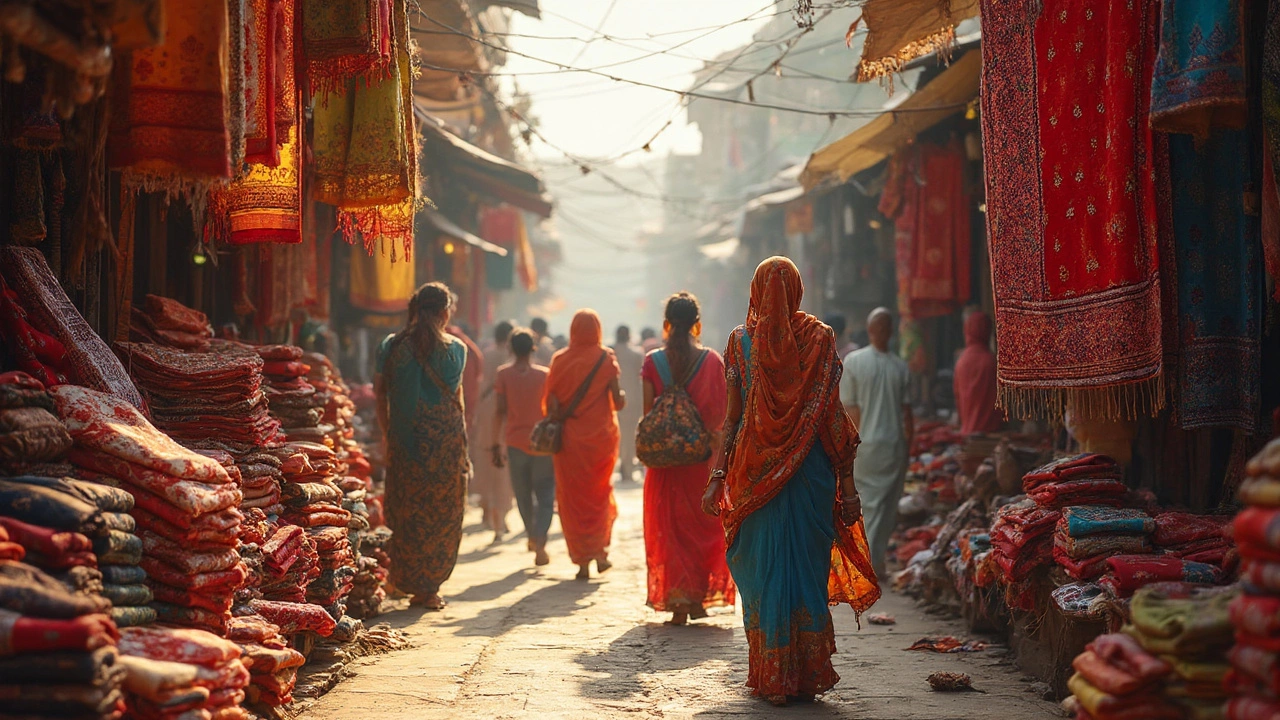- Which Manufacturing Sector Is the Most Profitable in 2025? Oct 26, 2025
- Top Pharma Plants in India: Leading Manufacturers in 2025 Oct 17, 2025
- What Indian Cars Are Sold in the USA? Real Answers for 2025 Nov 15, 2025
- Pittsburgh: The Steel Making Capital of the US – History, Facts & Impact Jul 14, 2025
- Top Steel Producers: Finding the Best Quality Worldwide Feb 19, 2025
Textile Manufacturing in India – What’s Happening Now?
India’s textile sector is humming louder than ever. From small family looms to high‑tech factories, the industry feeds fashion, home décor, and export markets. You probably wonder why it matters to you. Simply put, textiles touch almost every product you own – your shirt, your sofa, even the flag you see on a pole. Understanding the current landscape helps you spot growth spots, avoid pitfalls, and pick the right partners.
Key Trends Shaping the Industry
First up, sustainability. Buyers are demanding eco‑friendly fabrics, and manufacturers are swapping cotton‑intensive water use for recycled polyester, hemp, and organic cotton. The government’s “Make in India” push adds tax breaks for green tech, so more plants are installing low‑water dyeing machines.
Second, digital tools are cutting waste. Real‑time monitoring of loom speed, AI‑driven quality checks, and ERP systems keep inventory tight. That means faster order turnaround and fewer defective rolls ending up in landfills.
Third, the export game is getting fierce. Countries like Bangladesh and Vietnam have lowered labor costs, but India counters with value‑added products – think designer silks, technical fabrics for sportswear, and smart textiles with embedded sensors.
Challenges You Need to Watch
Even with these positives, the sector faces real hurdles. Power outages still hit many rural mills, raising production costs. Skilled labor is another bottleneck; younger workers often skip traditional apprenticeship routes for tech jobs, leaving a gap in hands‑on expertise.
Logistics can bite too. Port congestion on the West Coast sometimes delays shipments, hurting time‑sensitive orders. Companies that partner with reliable freight forwarders or use inland container depots tend to stay ahead.
Finally, price pressure remains relentless. Global cotton prices swing wildly, and raw material spikes can shrink margins fast. Hedging strategies, diversified fabric mixes, and bulk buying agreements are practical ways to keep budgets in check.
So, what can you do if you’re a manufacturer, supplier, or buyer? Start by auditing your energy use – a simple solar panel installation can shave off up to 30% of electricity bills. Next, explore adding a pilot line for recycled fibers; many small‑scale producers have turned a modest investment into a premium product line that fetches higher prices.
If you’re looking to source, ask suppliers about their sustainability certifications and whether they use digital traceability tools. Those who can show a clear fabric journey from farm to finished roll usually deliver more consistent quality.
Overall, India’s textile manufacturing is a mix of old‑world craftsmanship and modern tech. By keeping an eye on green trends, embracing digital tools, and navigating the logistical maze, you can turn challenges into opportunities and stay competitive in a fast‑moving market.
Gujarat Famous Cloth: The Story Behind India's Textile Powerhouse
- Aarav Sekhar
- May 25, 2025
Gujarat is a giant in the Indian textile scene, best known for its colorful and creative fabrics like bandhani and Patola. This article breaks down what makes Gujarat’s cloth unique, from the traditional techniques used to their global impact. Get familiar with must-know textile hotspots and find out which types of cloth you should check out if you want a real taste of Gujarat. Whether you're a buyer, a traveler, or just curious, you'll walk away with handy tips and surprising facts. The journey of Gujarat’s textiles is more than just fabric—it's full of culture, innovation, and craft.
Top Textile Manufacturing Giants: Spotlight on Global Leaders in 2025
- Aarav Sekhar
- Jan 28, 2025
The textile industry plays a significant role in the global economy. As of 2025, certain countries have positioned themselves as leaders in textile manufacturing. This article explores the current leading countries in the textile sector, drawing attention to their production capacities and competitive advantages. Readers will gain insights into the factors driving these countries' success and what to expect in the industry's future.

